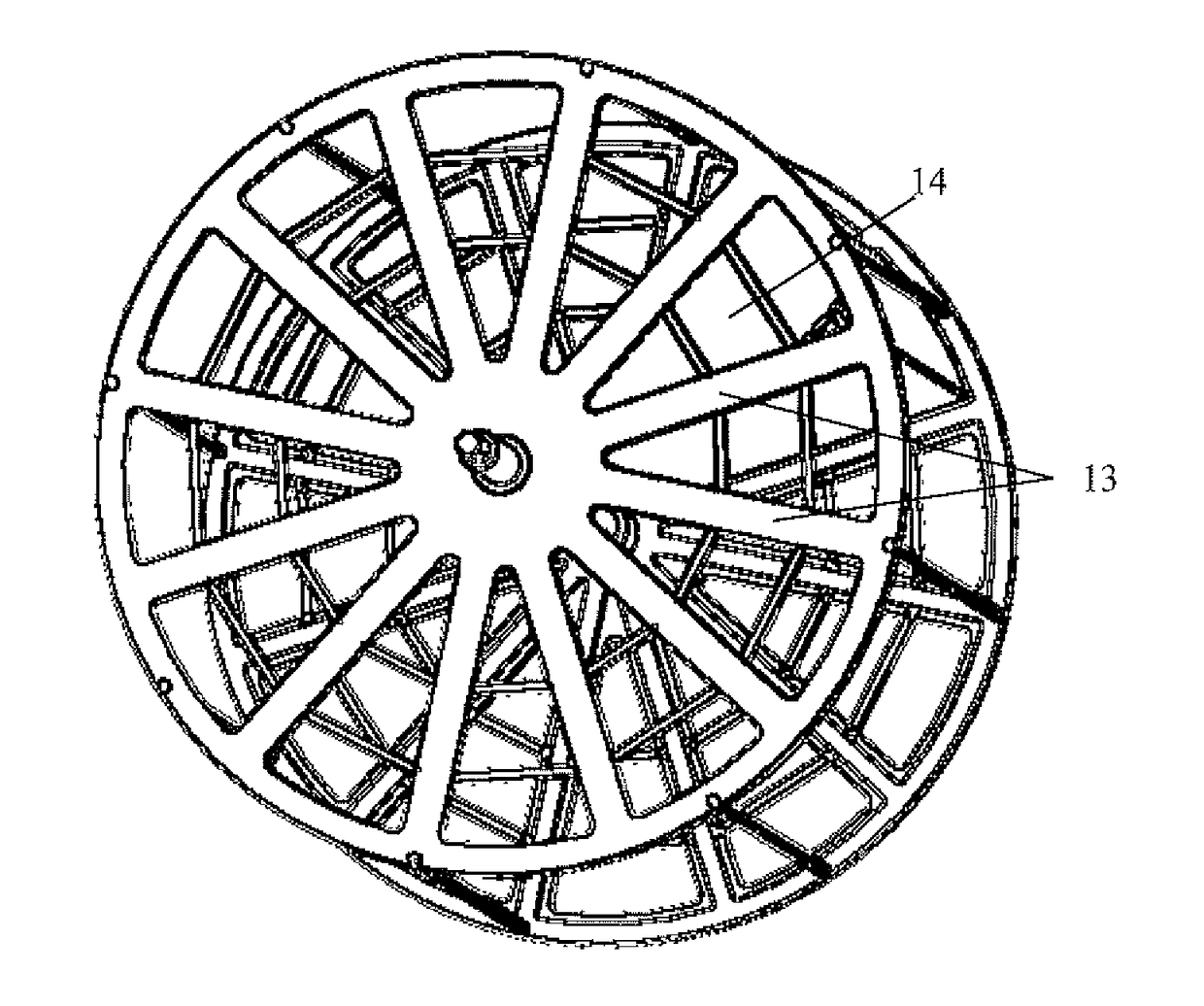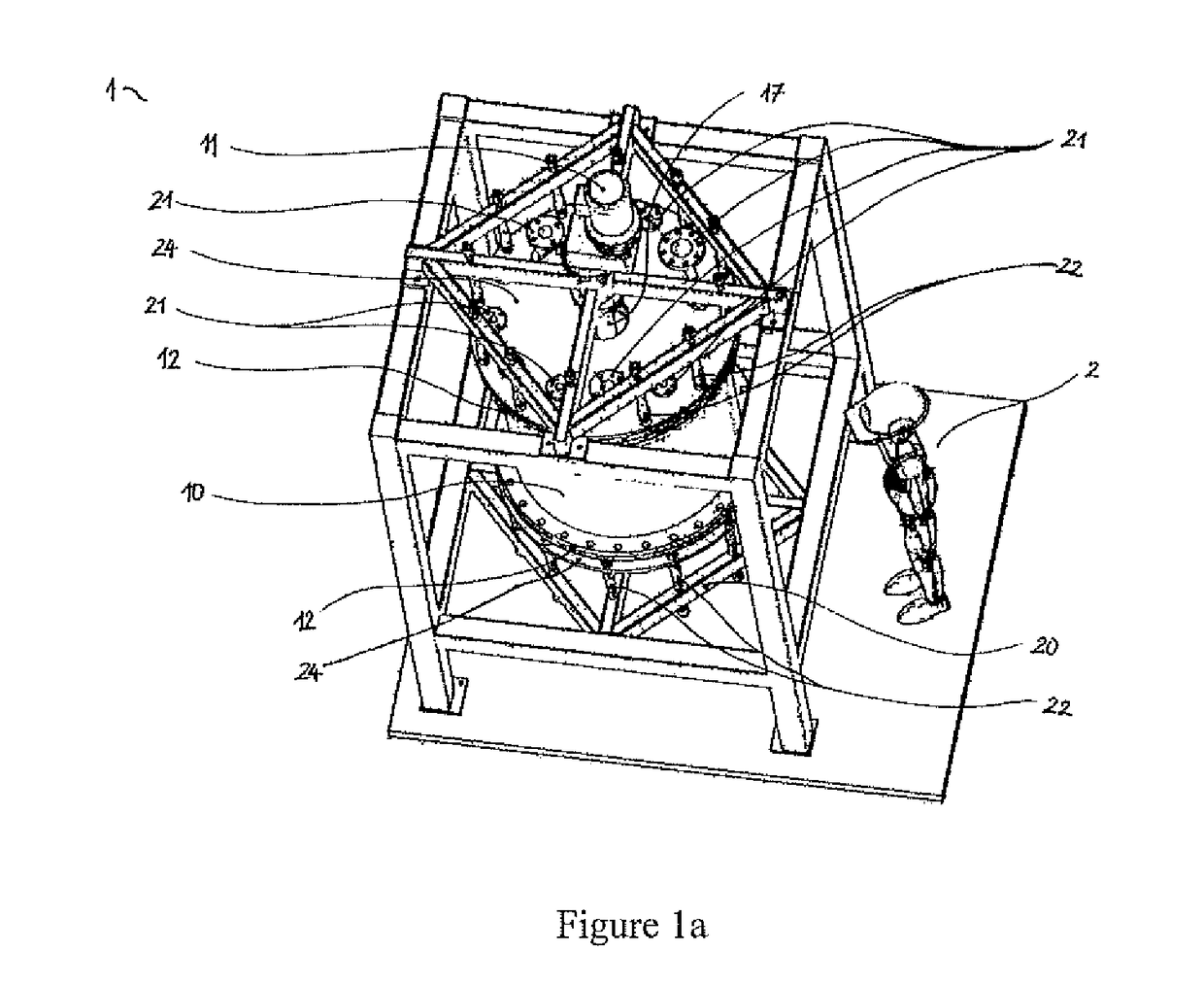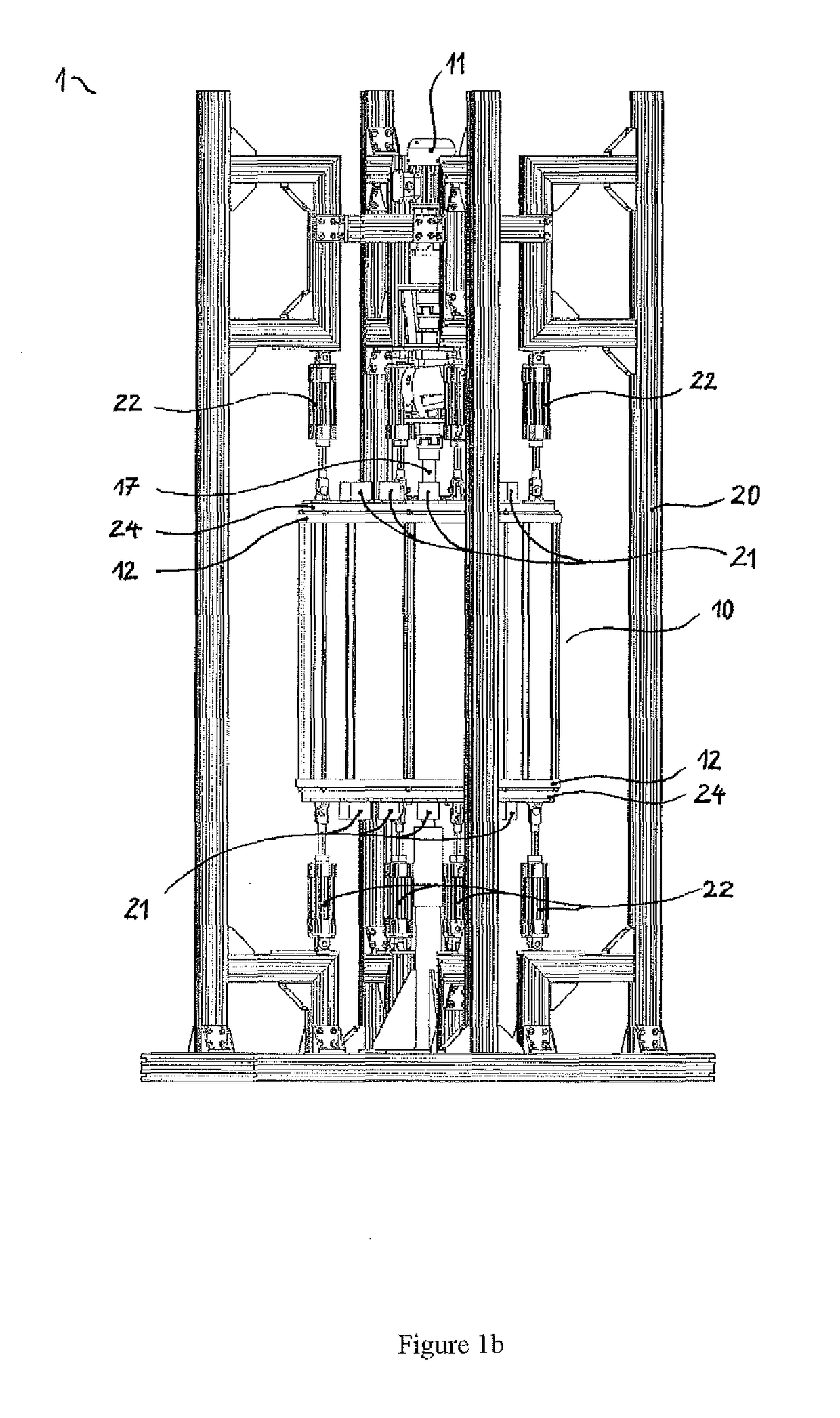Process for producing sodium carbonate/bicarbonate
a technology of sodium carbonate and bicarbonate, which is applied in the direction of separation process, product, dispersed particle separation, etc., can solve the problems of affecting the quality of refined sodium bicarbonate, and achieve the effect of reducing the dead zone and improving the concentration of the separated gas
- Summary
- Abstract
- Description
- Claims
- Application Information
AI Technical Summary
Benefits of technology
Problems solved by technology
Method used
Image
Examples
example 1
[0278]FIG. 9 illustrates various modes of application of the present invention. The diagram elements in solid lines illustrate production of sodium carbonate by the ammonia-soda process or production of refined sodium bicarbonate.
[0279]The diagram elements in dashed lines (concentration modules and arrows in dashed lines) illustrate various modes of application of the present invention utilizing a limited-enrichment TSA CO2 enrichment module, in particular according to item 14.
[0280]Key to abbreviations in FIG. 9:[0281]AB: Ammonia absorber (production of ammoniacal brine)[0282]CL: Carbonation column for precipitation of ammoniacal sodium bicarbonate (crude sodium bicarbonate).[0283]FL: Filter for separating ammoniacal bicarbonate (crude bicarbonate) from the crystallization mother liquors (rich in dissolved NH4Cl and NaCl), referred to as filter liquid.[0284]DS: Distiller for the crystallization mother liquors (for regeneration of ammonia), consuming lime and distillation steam and ...
example 2
Not in Accordance to the Invention
[0291]Production of crude ammoniacal sodium bicarbonate as described in Ullmann's encyclopedia (see above) in section 1.4.1.2 &FIG. 7 is carried out. The amount of weak gas injected at 2.5 bar in the middle of the carbonation column is 510 Nm3 of CO2 at 40 vol % on a dry gas basis, per ton of soda ash produced. The amount of rich gas (strong gas') injected at 3.5 bar at the bottom of the column is 390 Nm3 of CO2 at 70 vol % on a dry gas basis, per ton of soda ash produced. The temperature profile along the column (exothermic carbonation reaction) exhibits a temperature maximum of 58° C., and the slurry leaves the carbonation column at 30° C.
[0292]The moisture content of the ammoniacal crude bicarbonate produced, at the exit from the rotary filter, is approximately 18%.
example 3
In Accordance with the Invention
[0293]The same crude ammoniacal bicarbonate production process as described in the preceding example is made up with a lime-kiln weak-gas CO2 enrichment module operating with a fuel having a lower carbon content. The lime kiln gas produced has a weak gas with 37% by volume of CO2 concentration on a dry gas basis.
[0294]This weak gas is partially enriched by a TSA-type CO2 concentration module operating over a temperature range between 38° C. (adsorption) and 98° C. (desorption), to produce a gas enriched to 85% of CO2 by volume on a dry gas basis, which concentration is measured on a calibrated infra-red Siemens Ultramat 23 analyser. The concentration module uses hot condensates from the distillation section as heating fluid.
[0295]The same carbonation column is used as in Example 2, with a quantity of 37% weak gas (‘weak gas’) readjusted in CO2 level to 40% with the gas enriched to 85%, and injected at 2.5 bar, in the middle of the carbonation column. ...
PUM
| Property | Measurement | Unit |
|---|---|---|
| pressure | aaaaa | aaaaa |
| temperature | aaaaa | aaaaa |
| temperature | aaaaa | aaaaa |
Abstract
Description
Claims
Application Information
 Login to View More
Login to View More - R&D
- Intellectual Property
- Life Sciences
- Materials
- Tech Scout
- Unparalleled Data Quality
- Higher Quality Content
- 60% Fewer Hallucinations
Browse by: Latest US Patents, China's latest patents, Technical Efficacy Thesaurus, Application Domain, Technology Topic, Popular Technical Reports.
© 2025 PatSnap. All rights reserved.Legal|Privacy policy|Modern Slavery Act Transparency Statement|Sitemap|About US| Contact US: help@patsnap.com



